Animation Anecdotes Redux
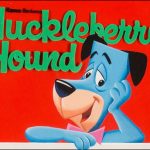
Suspended Animation #400

My first Animation Anecdotes column for Cartoon Research was March 15th, 2013 and it ran weekly until the final column of that version appearing February 1, 2019.
Having written animation anecdotes columns for several magazines since 1977, I finally got “burnt out” from having to find a variety of unusual little gems each week.
However, I never lost my affection for those tiny treasures and so today to celebrate installment #400 of Suspended Animation and to cleanse my palette before I go back to single topic columns, I am briefly returning to that format.
 No Ads! Lillian Friedman (Astor) who began her career as an inbetweener in 1930 on Cy Young’s independent short Spring Song and then moved to the Fleischer Studio in 1931, worked briefly with Ted Geisel (Dr. Seuss) on some early advertising films using animation, including one for Listerine. However, for the most part, they were never shown because theater owners didn’t want to screen product advertising as part of their show. Lillian had become an animator, after some time as Shamus Culhane’s assistant, in 1933 on Betty in Blunderland.
No Ads! Lillian Friedman (Astor) who began her career as an inbetweener in 1930 on Cy Young’s independent short Spring Song and then moved to the Fleischer Studio in 1931, worked briefly with Ted Geisel (Dr. Seuss) on some early advertising films using animation, including one for Listerine. However, for the most part, they were never shown because theater owners didn’t want to screen product advertising as part of their show. Lillian had become an animator, after some time as Shamus Culhane’s assistant, in 1933 on Betty in Blunderland.
Huckleberry Butler. From the Los Angeles Times May 20, 1988, Daws Butler claimed he just “had a knack for making my friends laugh. If I had an ego problem, it was early on in my career…I felt I shouldn’t have to go through life as Huckleberry Hound. But, then (later), I thought I shouldn’t be ashamed of being known as Huckleberry Hound either.”
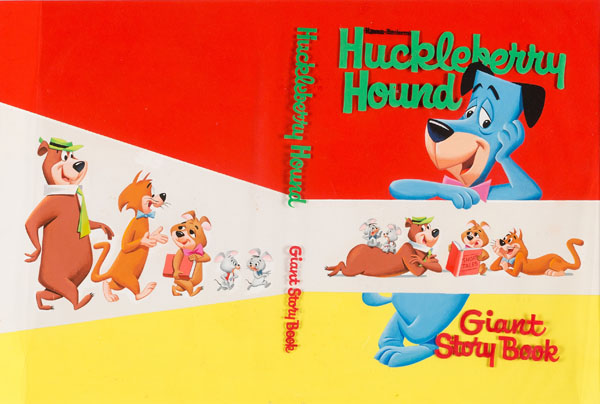
Art by Frank McSavage (1961)
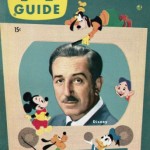 How Do You Doodle? In TV Guide for October 23-29, 1954, Walt Disney announced that one of the first year episodes of his new television show would be “How Do You Doodle?” in which doodles of the Disney artists would be set to music. Walt said, “The Disneyland show will be about 60 percent new stuff and 40 percent old. At that, some of the ‘old’ footage will be stuff the public has never seen. We’ll show, for example, an entire sequence from Snow White that never got into the final picture.”
How Do You Doodle? In TV Guide for October 23-29, 1954, Walt Disney announced that one of the first year episodes of his new television show would be “How Do You Doodle?” in which doodles of the Disney artists would be set to music. Walt said, “The Disneyland show will be about 60 percent new stuff and 40 percent old. At that, some of the ‘old’ footage will be stuff the public has never seen. We’ll show, for example, an entire sequence from Snow White that never got into the final picture.”
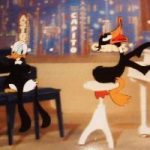 Roger Rabbit Problems. From Los Angeles Times Calendar section June 22, 1998, Animator Dave Spafford who drew the piano duel between Donald Duck and Daffy Duck in Who Framed Roger Rabbit said, “Having the camera constantly moving at such a subtle pace was scary at first. But it helped keep the characters alive.
Roger Rabbit Problems. From Los Angeles Times Calendar section June 22, 1998, Animator Dave Spafford who drew the piano duel between Donald Duck and Daffy Duck in Who Framed Roger Rabbit said, “Having the camera constantly moving at such a subtle pace was scary at first. But it helped keep the characters alive.
“If the live actor is standing still and the camera is locked down, the animation can go dead and the seperation between the cartoon character and the actor becomes obvious. But when the camera’s moving, it covers up that separation.
“One other problem that we had was that Bob Hoskins was so good. He stole the show in every shot. If he seemed more animated than the cartoon characters, we’d have really been in trouble. We had to pull out all the stops to compete with him.”
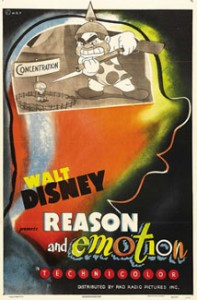 Don’t Get Emotional! Reason and Emotion (1943) was a wartime short made by the Disney Studio depicting a nerdy professor-ish character and a caveman as cartoon examples of the two aspects always battling in our minds when making decisions. The point was to keep emotion in check by not getting carried away by rumors or Hitler’s war mongering while still having emotional pride in the U.S.A.
Don’t Get Emotional! Reason and Emotion (1943) was a wartime short made by the Disney Studio depicting a nerdy professor-ish character and a caveman as cartoon examples of the two aspects always battling in our minds when making decisions. The point was to keep emotion in check by not getting carried away by rumors or Hitler’s war mongering while still having emotional pride in the U.S.A.
The character of Emotion was modeled after animator Ward Kimball who confessed to author Richard Shale in an interview on January 29, 1976: “Emotion was supposed to be Ward Kimball. I weighed a lot more then…had sort of a bluish, Nixon five o’clock shadow, more hair – it was black –and in those days, partly through basic insecurity in my character, I was a little gruff.”
A Disney publicity release dated November 23, 1943 verifies that Kimball was indeed the model but added that Ward was really “a quiet, unassuming person who reasons things out before acting.”
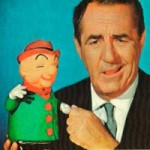 Backus on Magoo. In the May 27-June 2, 1961 issue of TV Guide magazine, Jim Backus who was forty-eight years old at the time was promoting his new television show The Jim Backus Show – Hot off the Wire playing Mike O’Toole who ran a seedy Press service.
Backus on Magoo. In the May 27-June 2, 1961 issue of TV Guide magazine, Jim Backus who was forty-eight years old at the time was promoting his new television show The Jim Backus Show – Hot off the Wire playing Mike O’Toole who ran a seedy Press service.
“My mother was a string saver,” Backus stated. “She told me never to waste anything. When UPA approached me I thought of her advice and of a character I’d used earlier. He was the type you meet in club cars. He talks loudly, shows family snapshots and tells jokes – always ruining them.
“I revived the voice for Mister Magoo and…well, I’ve been chuckling ever since. Mr. Magoo is a fine old gentleman. But after 12 years of association, I’m tired of him – everywhere but at the bank. If you write about me, please don’t play up the Mister Magoo bit.”
Ironically, the same issue had an article on Walt Disney who said, “Mister Magoo was based on a single gimmick, Magoo’s nearsightedness and unless you’re Jack Benny you can’t sustain one gag like that on TV for very long.”
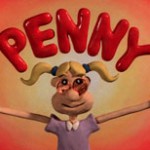 Penny on Pee-wee. From the Los Angeles Times June 29, 1988. Why were the clay animation “Penny” cartoons on Pee-wee’s Playhouse televsion series? “As I’m the host of the show and I’m a boy, I wanted to do a regular feature for girls that would be partially feminist in scope,” said producer-performer Paul Reubens. “We came up with the idea of having real little girls talk and then we edit and storyboard the results. I’m very pleased with that section because it’s totally a children’s piece. When Penny says things like ‘kids should have rights too’ it comes directly from a child’s perspective.”
Penny on Pee-wee. From the Los Angeles Times June 29, 1988. Why were the clay animation “Penny” cartoons on Pee-wee’s Playhouse televsion series? “As I’m the host of the show and I’m a boy, I wanted to do a regular feature for girls that would be partially feminist in scope,” said producer-performer Paul Reubens. “We came up with the idea of having real little girls talk and then we edit and storyboard the results. I’m very pleased with that section because it’s totally a children’s piece. When Penny says things like ‘kids should have rights too’ it comes directly from a child’s perspective.”
 Cartoon Favorites in Roger Rabbit. The original plans for Who Framed Roger Rabbit was not to use any animated characters created after 1947 (the penguin waiters in the Ink and Paint Club are supposedly actual penguin waiters and not the ones from Mary Poppins).
Cartoon Favorites in Roger Rabbit. The original plans for Who Framed Roger Rabbit was not to use any animated characters created after 1947 (the penguin waiters in the Ink and Paint Club are supposedly actual penguin waiters and not the ones from Mary Poppins).
One exception was the Road Runner who debuted in 1948 because it was one of director Robert Zemeckis’ favorites. “He’s just so great we had to have him,” rationalized Zemeckis who put the bird in the crowd scene. He did resist including Rocky and Bullwinkle.
One of Spielberg’s favorite characters was Disney’s Thumper the rabbit so he was made Roger’s uncle and Spielberg suggested the animators to give both characters the same mouth but that suggestion was ignored.
Actor Bob Hoskins’ favorites were Heckle and Jeckle and a scene was scripted with the pair but dropped before filming.
Quick Bits. Before entering the world of animation, William Hanna worked as a construction worker on the fabled Pantages Theater in Los Angeles… Disney’s Chicken Little (2005) had fourteen focus group testings during its production… Playboy publisher Hugh Hefner and his wife Kimberly attended the funeral services for Mel Blanc at the Beth Olam Cemetery… In the Warners cartoon Confederate Honey (1940), the line up of Confederate soldiers standing with rifles show caricatures of Mel Millar, Henry Binder, Ray Katz and Paul J. Smith… Actor Ernie Hudson auditioned to play the part he created in the original live action film for the animated series The Real Ghostbusters but he was not cast. The role was given to Arsenio Hall instead… Grim Natwick’s design of Betty Boop was supposedly influenced by singer Helen Kane. However, it seems he was also influenced by a drawing of a flapper by Albert Barbelle on the cover of the sheet music for the 1928 song That’s My Weakness Now that was made popular by Helen Kane.
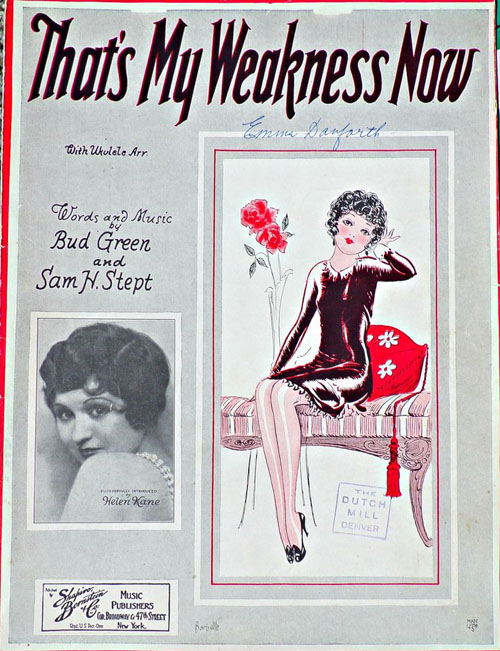
* This article was originally published here


Comments
Post a Comment